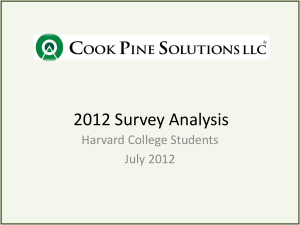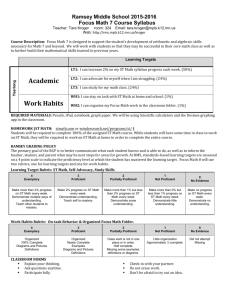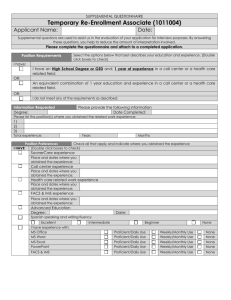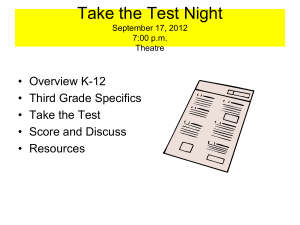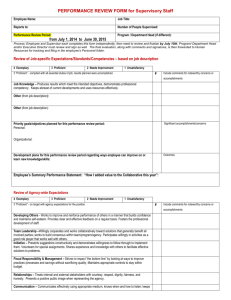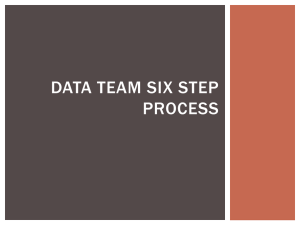Unit 5 UPO - Mississippi Bend AEA
advertisement
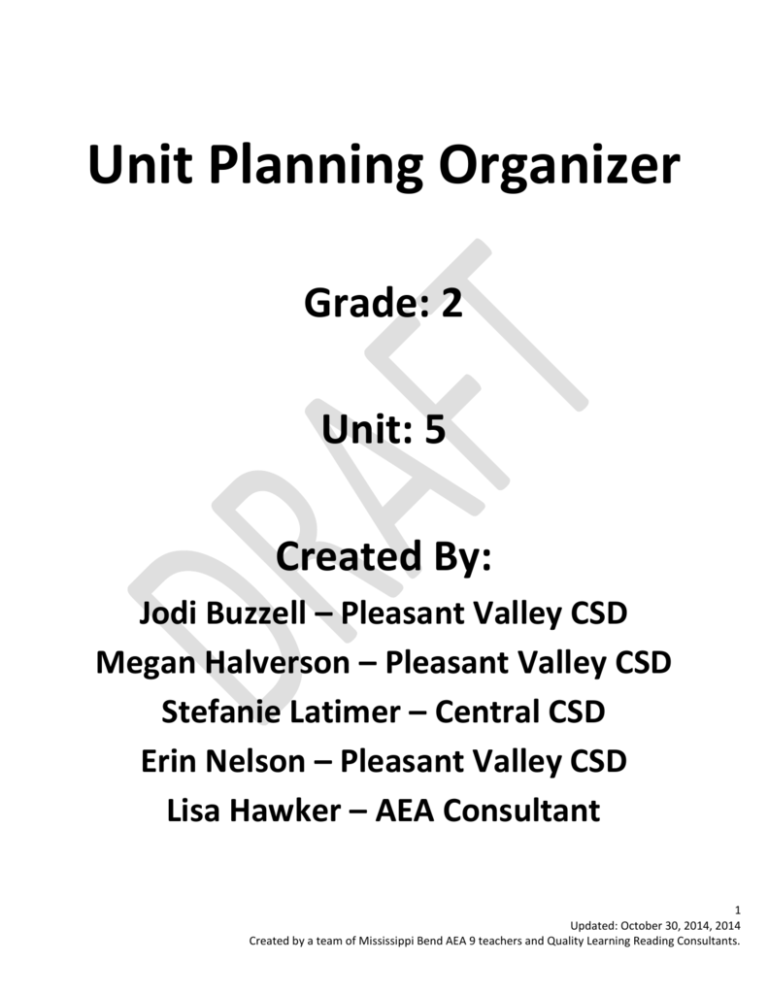
Unit Planning Organizer Grade: 2 Unit: 5 Created By: Jodi Buzzell – Pleasant Valley CSD Megan Halverson – Pleasant Valley CSD Stefanie Latimer – Central CSD Erin Nelson – Pleasant Valley CSD Lisa Hawker – AEA Consultant 1 Updated: October 30, 2014, 2014 Created by a team of Mississippi Bend AEA 9 teachers and Quality Learning Reading Consultants. Note: Teachers are strongly encouraged to look at the UPO for the context of assessments Table of Contents Step 1: Unit Standards …………………………………………………….………………………………………………………………………p. 3 Iowa Core Standards- Priority Standards ……………………………………………….……………………………………….p. 3 Iowa Core Standards- Support Standards ……………………………………………………………………………..………..p. 3 Reading Standards Unwrapped and Depth of Knowledge ……………………………………………………………... p. 4 Writing Standards Unwrapped and Depth of Knowledge ………………………………………………………………. p. 4 Speaking/Listening Standards Unwrapped and Depth of Knowledge …………………………………………….. p. Language Standards Unwrapped and Depth of Knowledge …………………………………………………………… p. Unit Essential Questions and Big Ideas ………………………..………………………………………………………………...p. 5 Step 2: Standards-Based Unit Assessments …………………………………………………………………………………………….p. 5 Assessment and Performance Task Alignment of Unit Standards …………………………………………………..p. 5 Standards-Based Common Formative Pre and Post-Assessment (CFA) Teacher Directions, Student Directions and Answers ..……………………………………………………. p. 6 Step 3: Standards-Based Performance Tasks …………………………………………………………………………………………. p. 9 Performance Task Synopses ……………………………………………………………………………………………………….... p. 9 Performance Task 1- In Detail ………………………………………………………………………………………………………. p. 10 Performance Task 2- In Detail ………………………………………………………………………………………………………. p. 13 Performance Task 3- In Detail …………………………….………………………………………………………………………… p. 15 Performance Task 4- In Detail ……………………………………………………………………………………………………… p. 18 Student Materials …………………………………………………………………………………………………………………………………. p. 22 Notes: Supporting standards may be embedded in performance tasks. If they are not embedded, they must be assessed through teacher-designed classroom measure. Supporting standards will not be embedded in common formative pre/post assessments. 2 Updated: October 30, 2014, 2014 Created by a team of Mississippi Bend AEA 9 teachers and Quality Learning Reading Consultants. Unit Planning Organizer Subject(s) Grade/Course Title of StandardsBased Unit Estimated Duration of Unit Unit Placement in Scope & Sequence ELA 2nd grade What do good readers and writers do? Using images and illustrations to determine understanding in literary and informational text. 6 weeks 1 2 3 4 5 6 Step 1: Unit Standards Iowa Core Standards- Priority Standards (to be instructed and assessed) RL.2.2, RL.2.7, RL.2.9, RI.2.2, RI.2.7, RI.2.9, W.2.2 RL.2.2 RL.2.7 RL.2.9 RI.2.2 RI.2.7 RI.2.9 W.2.2 Recount stories, including fables and folktales from diverse cultures, and determine their central message, lesson or moral. Use information gained from the illustrations and words in a print or digital text to demonstrate understanding of its characters, setting or plot. Compare and contrast two or more versions of the same story (e.g., Cinderella stories) by different authors or from different cultures. Identify the main topic of a multi-paragraph text as well as the focus of specific paragraphs within the text. Explain how specific images (e.g., a diagram showing how a machine works) contribute to and clarify a text. Compare and contrast the most important points presented by two texts on the same topic. Write informative/explanatory texts in which they introduce a topic, use facts and definitions to develop points, and provide a concluding statement or section. Iowa Core Standards- Support Standards (to be instructed and assessed) Note: Not all supporting standards will be measured through Standards-Based CFA or Performance Task listed below. RL.2.6, RI.2.6, RI.2.8, W.2.5, W.2.6, W.2.7, W.2.8, SL.2.4, SL.2.6, 3 Updated: October 30, 2014, 2014 Created by a team of Mississippi Bend AEA 9 teachers and Quality Learning Reading Consultants. Reading Standards Priority Standard RL.2.2 RL.2.7 “Unwrapped” Skills (students need to be able to do) (verbs and verb phrases) Stories Fables and Folktales Diverse Cultures Central message, lesson, or moral Use information Demonstrate understanding RL.2.9 Compare Contrast RI.2.2 Identify Focus RI.2.7 RI.2.9 Explain Contribute Clarify Compare Contrast “Unwrapped” Concepts (students need to know) (noun/noun phrases) Recount Describe Determine Depth of Knowledge for All DOK 2 DOK 2 Illustrations and words Plot Print or digital text Setting Characters Stories Different authors Different cultures Main topic Multi-paragraph text Paragraphs Text Specific images (diagrams) Important points Same topic texts DOK 3 DOK 2 DOK 2 DOK 3 Writing Standards Priority Standard W.2.2 “Unwrapped” Skills (students need to be able to do) (verbs and verb phrases) Write texts Introduce topics Use facts and definitions Develop points Provide a conclusion “Unwrapped” Concepts (students need to know) (noun/noun phrases) Informative/explanatory texts Topic Facts and definitions Points Concluding statement or section Depth of Knowledge for All DOK 2, 3 4 Updated: October 30, 2014, 2014 Created by a team of Mississippi Bend AEA 9 teachers and Quality Learning Reading Consultants. Unit Essential Question and Big Ideas Essential Questions How do good writers share information? Big Ideas Authors use different forms of writing to communicate ideas and information to an audience. Why is it important to know key details and the main topic of a text? How does this help me recount the story Identifying the key details and main topic help me to recount the story or text. How do readers compare and contrast to find similarities and differences between texts or ideas? Using information from two or more sources helps us to widen our understanding of a topic, event, or story elements. How can information gained from images and illustrations contribute to the story Various text features help me to gain understanding of story elements. Step 2: Standards-Based Unit Assessments Assessment and Performance Task Alignment of Unit Standards Assessment/Performance Task Pre CFA Performance Task #1 Performance Task #2 Performance Task #3 Performance Task #4 Post CFA Assessed Standards RL.2.7, RI.2.7, RL.2.9 RI.2.7 (W.2.5, W.2.6, W.2.7, W.2.8, SL.2.4, SL.2.6) W.2.2, RI.2.2 (W.2.5, W.2.6, W.2.8, RI.2.6) RI.2.9 (RI.2.6, RI.2.8, SL.2.3, SL.2.6, W.2.7) RL.2.7, RL.2.2, (SL.2.4, SL.2.6, RL.2.6, W.2.5, W.2.6) RL.2.7, RI.2.7, RL.2.9 5 Updated: October 30, 2014, 2014 Created by a team of Mississippi Bend AEA 9 teachers and Quality Learning Reading Consultants. Standards-Based Common Formative Post-Assessment (CFA) Standards: RL.2.7, RI.2.7, RL.2.9 Teacher Directions: Students will need to read the text independently with no support provided from the teacher. Texts used: o Young, Ed. Lon Po Po (1989). Philomel Books. New York, NY. o Gibbons, Gail. Wolves (1994). Holiday House. New York, NY. o Marshall, James. Red Riding Hood (1987). Dial Books. New York, NY. Student Directions and Possible Answers: Student will read the text independently with no support provided from the teacher. Part 1: Directions: Using the illustration from the text, Lon Po Po, answer the following questions using complete sentences. 1. Look at the picture. What do you know about the characters? a. How are the children feeling? Student reference feelings of worry, fright, or anxiety and use complete sentences to convey their answer. b. How do you know? Students reference the wolf, the dark shadow, or the dark colors, or the children’s facial expressions. 2. What do you know about the setting? The setting is at night. a. How do you know? The darkness from the illustration. 3. What do you predict the problem is in the story? The problem is the children are scared of the wolf or reference how the children are feeling as a result of the wolf being present. a. How do you know? The student references the wolf’s shadow or how the children look. Part 2: Directions: Using the images from the text, Wolves, answer the following questions using complete sentences. 1. How can the illustrations above help you understand what the story is about? The student references how the images help them understand the story is about wolves and how they communicate. 2. What are the images showing? The images are showing how wolves communicate and reference bark, snarl, woof, and whimper. 3. ‘Wolves make different sounds to “talk” to each other.’ How is the text supported by the images? The text is supported by the images because the images show the different ways wolves talk. 4. When do you predict a wolf would snarl? The student correctly infers that wolves snarl because the wolf is being threatened or ready to attack. 6 Updated: October 30, 2014, 2014 Created by a team of Mississippi Bend AEA 9 teachers and Quality Learning Reading Consultants. Part 3: Instead of reading the passages directly, the teacher can play the 2 parts found on Bookflix, playing only the sections below. Directions: Compare and contrast the images and story selections. (RL.2.9) Lon Po Po by Ed Young Red Riding Hood by James Marshall Shang listened through the door. “Po Po,” she said. “why is your voice so low?” “Your grandmother has caught a cold, good children, and it is dark and windy out here. Quickly open up, and let your Po Po come in,” the cunning wolf said. Tao and Paotze could not wait. One unlatched the door and the other opened it. They shouted, “Po Po, Po Po, come in!” At the moment he entered the door, the wolf blew out the candle. “Po Po, Shang asked, “why did you blow out the candle? The room is now dark.” The wolf did not answer. Red Riding Hood was distressed at seeing her grandmother so changed. “Why, Granny,” she said, “what big eyes you have.” “The better to see you, my dear,” said the wolf. “And Granny, what long arms you have.” “The better to hug you, my dear,” said the wolf. “And Granny, what big teeth you have.” Lon Po Po Same Red Riding Hood 3 characters Question was about his voice and candle. Wolf Asking questions Wolf is answering questions 1 Character Questions are about his appearance (arms, teeth, eyes). 7 Updated: October 30, 2014, 2014 Created by a team of Mississippi Bend AEA 9 teachers and Quality Learning Reading Consultants. The wolf is a shadow Inside The wolf is pretending to be granny. Scoring Guide RL.2.7 Part 1 Q. 1, 2, 3 Exemplary Proficient o All proficient criteria Student correctly uses plus: information from the o Student is able to prove illustrations and words in a how illustrations help print of digital text to convey mood or demonstrate understanding emphasis aspect of a of: character or setting. o Character (RL3.7) o Setting o Plot Close to Proficient o Meets 2 out of the 3 proficient criteria. The wolf is in bed Far from Proficient o Meets 1 of the proficient criteria. Comments: Scoring Guide RI.2.7 Part 2 Q. 1, 2, 3, 4 Exemplary Proficient Close to Proficient o All proficient criteria o Student explains how o Meets 1 out of 2 of o plus: specific images contribute the proficient o (Q3 only) Students used to the text. criteria. the text and the images o Student explains how to demonstrate specific images clarify to Comments: understanding of the the text. text. (RI.3.7) Scoring Guide for RL.2.9 (Part 3) Exemplary Proficient Close to Proficient All proficient criteria o Student compares two or o Meets 1 out of 2 proficient plus: more versions of the same criteria. o Student compares story. Comments: and contrasts the o Student contrasts two or 1. themes, more versions of the same 2. settings, story. 3. plot of two versions of the same story. Far from Proficient Meets none of the proficient criteria. Far from Proficient o Meets none of the proficient criteria. 8 Updated: October 30, 2014, 2014 Created by a team of Mississippi Bend AEA 9 teachers and Quality Learning Reading Consultants. Step 3: Standards-Based Performance Tasks Performance Task Synopses Task 1: RI.2.7 (W.2.5, W.2.6, W.2.7, W.2.8, SL.2.4, SL.2.6) Synopsis: Students will design nonfiction text features such as captions, bold print, headings, labels, etc. for a nonfiction text. Performance Task #1 will follow instruction on explaining how specific images contribute to and clarify a text. Task 2: W.2.2, RI.2.2 (W.2.5, W.2.6, W.2.8, RI.2.6) Synopsis: Students will use nonfiction texts (both digital and print resources) to research their guiding question from Performance Task #1. They will identify the main topic of a multiparagraph text as well as the focus of specific paragraphs within the text (RI.2.2). Performance Task #2 will follow instruction on how to write Informational/Explanatory text that introduces a topic, uses facts and definitions to develop points, and provides a concluding statement or section (W.2.2). Students will focus on a topic, with guidance and support, and strengthen writing as needed by revising and editing (W.2.5). Task 3: RI.2.9 (RI.2.6, RI.2.8, SL.2.3, SL.2.6, W.2.7) Synopsis: Students will work in collaborative groups to compare and contrast nonfiction topics and generating a presentation of their learning. Performance Task #3 will follow instruction on how to collaboratively compare and contrast two texts (aka student, published work from Performance Task #2). Task 4: RL.2.7, RL.2.2, (SL.2.4, SL.2.6, RL.2.6, W.2.5, W.2.6) Synopsis: Students will create text for a wordless picture book. Performance Task #4 will follow instruction on how to use information gained from the illustrations to gain understanding of its characters, setting, or plot (RL.2.7) to create text for a wordless picture book and present in a book club setting. 9 Updated: October 30, 2014, 2014 Created by a team of Mississippi Bend AEA 9 teachers and Quality Learning Reading Consultants. Performance Task # 1- In Detail Priority Standards: RI.2.7 Supporting Standards (if applicable): W.2.5, W.2.6, W.2.7, W.2.8, RI.2.6 Big Idea/s: Images and illustrations add meaning. Essential Question/s: How can images and illustrations help our understanding? DOK: 1 Synopsis You are a historian for the Smithsonian Institution. You have been assigned the task of creating a digital story of U.S. Presidents, based on the book So You Want To Be President. Your digital story will be posted on the Smithsonian’s website. You will need to include nonfiction text features in your design. Task 1: Synopsis: Students will create images and illustrations using a nonfiction text. The images and illustrations will include nonfiction text features such as but not limited to: heading, labels, captions, text boxes. Students will then put the pages together into a digital book Teacher Directions: This performance task is given after students have had instruction on all of the standards listed. This is a stand-alone task. This task can’t be given in the teaching of these skills and concepts. It is the first time they are performing this task. • Students will work collaboratively to design illustrations for each page in the mentor, nonfiction, text Martin Luther King and the March on Washington by Frances E. Ruffin or So You Want to be President by Judith St. George (or another text available). • Read aloud the selected mentor text without showing students the images. • Assign each student a page and/or section from the mentor text for them to create the specific images that can contribute to and clarify the text. • Students will include nonfiction text features such as captions, bold print, headings, labels, etc. on a teacher created organizer. (RI.2.7, SL.2.6) • Please note the rubric for proficient criteria. • Have students collaborate in small groups to strengthen writing as needed through the revision and editing process. (W.2.5, W.2.7) • The second half of this task is the creation of the digital story to accompany the images created by the students. • Have students practice their selected text pages orally reading with peers. • Students will then use technology to record the story incorporating the illustrations, in order to create an electronic class book. (SL.2.4, SL.2.6, W.2.6, W.2.7) • After completing the project, have students develop a guiding question they would like to research based on their specific page when appropriate. For example if the student page was about presidents, they could research more about a specific president. (W.2.8) This will provide a link to Performance Task #2. Student Directions: Students will listen to the mentor text and visualize an image during the read aloud. Students will be encouraged to think of an image that goes with the text – remind students that people may have different images but as long as they match or clarify the words that are read, it is OK. 10 Updated: October 30, 2014, 2014 Created by a team of Mississippi Bend AEA 9 teachers and Quality Learning Reading Consultants. Students will be assigned a page from the mentor text to illustrate – the image needs to match the text, and to include non-fiction text features. When students have completed their page, they will work in a small group to edit and revise the writing within the non-fiction text features. After revision, students will collaboratively read their page from the mentor text (in numerical order) while the reading is recorded by the teacher (this is the digital book). Suggestions for Instruction: Teacher created graphic organizer Task is not specific to the text So You Want To Be President. Teachers can choose a nonfiction text that will fit the task. Students may or may not read their non-fiction text feature for the digital book Differentiation Option: Variation of text per page for student reading ability, number of pages given to students based on readiness. Technology Scoring Guide for Collaborative Component RI.2.7 Exemplary Proficient All proficient criteria o Student designed images to plus: accurately depict the o Images incorporate meaning of the mentor text understanding of o Student includes 3 features where, when, why, of nonfiction text elements. and how key events occur. Close to Proficient Far from Proficient o Student images o Student images do not incorporate some accurately depict the mentor but not all text. information o Meets fewer than 2 of the presented in the nonfiction text elements. mentor text. o Meets 2 out of 3 of the nonfiction text elements. Comments: Scoring Guide for Collaborative Component SL.2.6 Exemplary Proficient All proficient criteria o Student produces complete plus: sentences when o Student speaks in appropriate. complete o Student provides requested sentences when detail or clarification when appropriate during appropriate (if not the recording applicable, this will not process. count against proficiency). Close to Proficient o Meets 1 out of 2 of the proficient criteria. Comments: Far from Proficient o Meets none of the proficient criteria. 11 Updated: October 30, 2014, 2014 Created by a team of Mississippi Bend AEA 9 teachers and Quality Learning Reading Consultants. Scoring Guide for Collaborative Component SL.2.4 Exemplary Proficient All proficient criteria o Students accurately recount plus: the nonfiction mentor text o Speak at an including: understandable o Appropriate facts pace o Relevant descriptive details o Speak audible Close to Proficient o Meets 2 out of 3 of the proficient criteria. Comments: Far from Proficient o Meets fewer than 2 of the proficient criteria. Close to Proficient o Meets 1 out of 2 of the proficient criteria. Comments: Far from Proficient o Meets none of the proficient criteria. Scoring Guide for Collaborative Component W.2.6 Exemplary Proficient o Used a variety of digital tools to produce and publish writing o Collaborated with peers through the process. Close to Proficient o Meets 1 out of 2 of the proficient criteria. Comments: Far from Proficient o Meets none of the proficient criteria. Scoring Guide for Collaborative Component W.2.7 Exemplary Proficient o Participated in shared research and writing projects. o Scoring Guide for Collaborative Component W.2.5 Proficient o Focused on the topic o Strengthened writing as needed by revising and editing Close to Proficient o Far from Proficient Meets none of the proficient criteria. Comments: 12 Updated: October 30, 2014, 2014 Created by a team of Mississippi Bend AEA 9 teachers and Quality Learning Reading Consultants. Scoring Guide for Collaborative Component W.2.8 Exemplary Proficient o Gathered information from the mentor text to answer the question. Close to Proficient o Far from Proficient o Meets none of the proficient criteria. Comments: Performance Task # 2- In Detail Priority Standards: W.2.2, RI.2.2 Supporting Standards (if applicable): (W.2.5, W.2.6, W.2.8, RI.2.6) Big Ideas: By asking and answering questions I can identify important information that will help me recount the story or identify the main topic. Authors use different forms of writing to communicate ideas and information to an audience. Essential Questions: Why is it important to know key details and the main topic of a text? How does this help me recount the story? How do good writers share information? DOK: 2 Synopsis: You are a teacher and need to prepare a visit for the entire school from a historic figure. You will be responsible for researching a historic figure and writing a biography. After writing the biography, you will compare and contrast your biography with a peer, who wrote about a different historic figure. Then the PTA will review the biographies and choose a historic figure that will visit next year. Synopsis: Students will research a historic figure. After generating questions to guide the investigation, students will write a biography about his/her historic figure. Teacher Directions: Students will use nonfiction texts (both digital and print resources) to research their guiding question from Performance Task #1. Make sure that students will be able to find a ‘like-partner’ to compare and contrast with in Performance Task #3. They will identify the main topic of a multi-paragraph text as well as the focus of specific paragraphs within the text (RI.2.2). Performance Task #2 will follow instruction on how to write Informational/Explanatory text that introduces a topic, uses facts and definitions to develop points, and provides a concluding statement or section (W.2.2). Students will focus on a topic, with guidance and support, and strengthen writing as needed by revising and editing (W.2.5). • Students will use a variety of digital tools to produce and publish writing, including in collaboration with peers (W.2.6). • Students will recall information from experiences or gather information from provided sources to answer a question (W.2.8). • Students will identify the main purpose of a text, including what the author wants to answer, explain, or describe (RI.2.6) Suggestions for Instruction: Teacher created graphic organizers Utilize teacher librarians 13 Updated: October 30, 2014, 2014 Created by a team of Mississippi Bend AEA 9 teachers and Quality Learning Reading Consultants. Differentiation Option: Technology Student Directions: Use your guiding question to find information about your topic. Once you have compiled the information, you will write a biography with a beginning, middle and end, including introducing your topic, use facts and definitions to develop points and provide a concluding statement. When you have finished your piece, you will engage in peer editing with a classmate by exchanging your writing and offering suggestions for improvement. Make revisions to your own writing as suggested. Scoring Guide W.2.2 Exemplary Proficient All proficient criteria Student includes: plus: Topic o use linking words Facts to develop points and phrases to Definitions to develop points connect ideas Concluding statement or section. within categories of information. (W.3.2) Scoring Guide for Collaborative Component RI.2.2 Exemplary Proficient All proficient criteria o Student correctly identifies main idea of plus: passage o Student provides o Student correctly identifies main idea of a text evidence to specific paragraph within the passage support identified main topic of multiparagraph text. Close to Proficient o Meets 3 out of 4 proficient criteria Comments: Close to Proficient Far from Proficient o Meets 1 of the O Meets none of the proficient criteria. proficient criteria Comments: Scoring Guide for Collaborative Component W.2.5 Exemplary Proficient o o Focused on the topic Strengthened writing as needed by revising and editing Far from Proficient o Meets less than 3 proficient criteria Close to Proficient o Meets 1 out of 2 of the proficient criteria. Comments: Far from Proficient o Meets none of the proficient criteria. 14 Updated: October 30, 2014, 2014 Created by a team of Mississippi Bend AEA 9 teachers and Quality Learning Reading Consultants. Scoring Guide for Collaborative Component W.2.6 Exemplary Proficient o Used a variety of digital tools to produce and publish writing o Collaborated with peers through the process. Scoring Guide for Collaborative Component W.2.8 Exemplary Proficient o Gathered information from the mentor text to answer the question. Close to Proficient o Meets 1 out of 2 of the proficient criteria. Comments: Far from Proficient o Meets none of the proficient criteria. Close to Proficient Far from Proficient o Meets none of the proficient criteria. Comments: Performance Task # 3- In Detail Priority Standards: RI.2.9 Supporting Standards (if applicable): RI.2.6, RI.2.8, SL.2.3, SL.2.6, W.2.7 Big Ideas: Using information from two or more sources helps us to widen our understanding of a topic, event, or story elements. Essential Questions: How do readers compare and contrast to find similarities and differences between texts or ideas? DOK: 3 Synopsis: You are a teacher and need to prepare a historic figure visit for the entire school. You will be responsible for researching a historic figure and writing a biography. After writing the biography, you will compare and contrast your biography with a peer, who wrote about a different historic figure. Then the PTA will review the biographies and choose the author that will visit next year. Task 3: Synopsis: Students will collaborate with a peer to compare and contrast historic figure biographies on the same topic (Presidents, Authors, Artists, etc). Individually students will create a presentation; either a bottle biography or a person poster to present information about his/her historic figure. Teacher Directions: This performance task is given after students have had instruction on all of the standards listed above. This task builds on Performance Task #2 and should be taught sequentially after the completion of PT#2. • Students will use the writing piece from performance task #2 to compare and contrast historic figures, or 15 Updated: October 30, 2014, 2014 Created by a team of Mississippi Bend AEA 9 teachers and Quality Learning Reading Consultants. nonfiction topics of their choosing, with a partner. • Using a teacher created prompt starting with, “The main purpose of my text is to…” The response should prompt students to describe or explain the purpose of their text (RI.2.6). • Next have students respond by asking and answering questions about what the speaker said in order to clarify comprehension, gather additional information, or deepen understanding of the topic (SL.2.3) • Note how students respond in complete sentences during the conversation (SL.2.6). • Next, using a graphic organizer, students will compare and contrast specific points made in their text (RI.2.8 and RI.2.9). This is their rough draft. • Create a menu of options for students to present a visual representation to demonstrate how their topics compare and contrast. (W.2.7) • Give students time to generate the representation and practice their presentation of information gleaned from their collaborative conversations. Suggestions for Instruction: Teacher created graphic organizers Teacher created Presentation Menu (options: visual presentations) Examples for presentations: Biography Bottles: https://www.flickr.com/photos/smcl/4390208785/in/photostream/ Person Poster: http://www.cottageonblackbirdlane.com/2008/11/3rd-grade-biography-project.html Differentiation Options: Technology, Student Interest, Multiple Learning Styles Student Directions: Find a partner with the same topic as you. You will be comparing and contrasting information that you found while researching for your biography. You will be using your agreed-upon principles to have a conversation about the purpose of your text, as well as asking and answering questions with your partner to clarify comprehension, gather additional information or deepen your understanding. You will need to be an active participant in order to get the information you need to create a visual representation of your shared biography topic. Be sure to write notes on your graphic organizer. Scoring Guide for Independent Component RI.2.9 Exemplary Proficient All proficient criteria plus: o Compares the important points o Includes comparing presented in two texts on the and contrasting of key same topic details o Contrasts the important points presented in two texts on the same topic Close to Proficient Meets 1 of the proficient criteria. Far from Proficient Meets none of the proficient criteria. Comments: 16 Updated: October 30, 2014, 2014 Created by a team of Mississippi Bend AEA 9 teachers and Quality Learning Reading Consultants. Scoring Guide for Independent Component RI.2.6 Exemplary Proficient o Identified the main purpose of the text. Close to Proficient Far from Proficient Meets none of the proficient criteria. Comments: Scoring Guide for Independent Component RI.2.8 Exemplary Proficient All proficient criteria plus: o Described more than 3 reasons to support specific points the author made. o Described 3 reasons to support specific points the author made. Close to Far from Proficient Proficient Meets 2 of the 3 Meets fewer than 2 of the proficient criteria. proficient criteria. Comments: Scoring Guide for Independent Component SL.2.3 Exemplary Proficient All proficient criteria plus: o Ask and answer 3 questions o Asks and answers about what the speaker said to more than 3 clarify comprehension. questions about what the speaker said to clarify comprehension. Scoring Guide for Independent Component SL.2.6 Exemplary Proficient All proficient criteria plus: o Uses complete sentences o Is more formal in o Sentences provide clarity or sentences, clarity, and detail detail Close to Proficient Meets 2 of the 3proficient criteria. Comments: Far from Proficient Meets fewer than 2 of the proficient criteria. Close to Far from Proficient Proficient Meets 1 of the Meets none of the proficient proficient criteria. criteria. Comments: 17 Updated: October 30, 2014, 2014 Created by a team of Mississippi Bend AEA 9 teachers and Quality Learning Reading Consultants. Scoring Guide for Independent Component W.2.7 Exemplary Proficient o Participated in the project, sharing and creating the work equally. Close to Proficient Participated some of the time. Far from Proficient Did not readily participate Comments: Performance Task # 4- In Detail Priority Standards: RL.2.7, RL.2.2 Supporting Standards (if applicable): SL.2.4, SL.2.6, RL.2.6, W.2.5, W.2.6 Big Idea/s: Images and illustrations add meaning. By asking and answering questions I can identify important information that will help me recount the story or identify the main topic. Essential Question/s: How can images and illustrations help our understanding? Why is it important to know key details and the main topic of a text? How does this help me recount the story? DOK: 2 Synopsis: You are an author. Your publisher has requested you to work with an illustrator of a wordless picture book. It is your job to develop a story to match the illustrations from the book. You will work collaboratively with a group of authors to prepare the story, using information gained from the illustrations about character, setting, and plot. After completing your story, you will prepare talking points for a book club discussion at the local Barnes and Noble, where you will address the public with the new version of your wordless picture book! Task 4: Students will collaboratively create text for a wordless picture book. After generating the story for the wordless picture book, students will develop talking points for a book club discuss on the new version of the wordless picture book. Teacher Directions: This performance task is given after students have had instruction on all of the standards listed. This is a stand-alone task. This task can’t be given in the teaching of these skills and concepts. It is the first time they are performing this task for literature. They have used images from information texts prior to this standard. Show students a variety of wordless picture books and tell a story in your own words, using the illustrations as your guide (RL.2.7). Explain to students how the illustrations were your key to developing the plot of your story. Using a graphic organizer, students will work collaboratively in small groups or pairs to create a text for the wordless picture book Flotsom by David Wiesner (RL.2.7). Reference the Performance Task #4 rubric. During the writing process students will strengthen writing as needed by revising and editing (W.2.5) Create a menu of digital options for students to present their writing (W.2.6). After completing the story, students will read each other’s work and prepare a book club discussion using a graphic organizer to recount stories and determine the central message, lesson, or moral (RL.2.2). The discussion will include a review of the book and preparation of discussion points (SL.2.4 and SL.2.6). ***It might be easier to score by video taping the book club conversations in order to evaluate each student’s individual participation. Suggestions for Instruction: Teacher created graphic organizers for story organization and book club presentation. Consider using post-it notes as a way to have individual accountability for each student for the writing task. Another option could be using different colored ink, or having the students write their initials next to their contribution. Help 18 Updated: October 30, 2014, 2014 Created by a team of Mississippi Bend AEA 9 teachers and Quality Learning Reading Consultants. the students create talking points to facilitate the book club conversation after they read their book. (e.g.; plot, character description or actions, how they describe the setting, the introduction and conclusion) Differentiation Options: Have students type their portion of the book – they will be responsible for reading the portion they created. Student Directions: You will work in small groups to develop a story (text) for a wordless picture book. You will have to cooperate and compromise to find the words that support and clarify the image in the book. You will have to present your book to the class. You will need to prepare talking points to help lead in book club conversations. Classmates may also create questions for you and your group to answer or clarify. Scoring Guide for Independent Component RL.2.7 Exemplary Proficient o All proficient criteria Student correctly uses information plus: from the illustrations and words in a o Student is able to print of digital text to demonstrate prove how understanding of: illustrations help o Character convey mood or o Setting emphasis aspect of a o Plot character or setting. (RL3.7) Scoring Guide for Independent Component RL.2.2 Exemplary Proficient All proficient criteria o Student correctly recounts the plus: story. o Student provides text o Student correctly identifies evidence to support central message, lesson, or identified central moral. message, lesson, or moral. Close to Proficient Far from Proficient Meets 2 out of the Meets 1 of the proficient 3 proficient criteria. criteria. Comments: Close to Proficient Far from Proficient Meets 1 of the Meets none of the proficient criteria. proficient criteria. Comments: 19 Updated: October 30, 2014, 2014 Created by a team of Mississippi Bend AEA 9 teachers and Quality Learning Reading Consultants. Scoring Guide for Independent Component W.2.5 Exemplary Proficient o Focused on the topic o Strengthened writing as needed by revising and editing Close to Proficient Far from Proficient Meets 1 out of 2 Meets fewer than 1 of the of the proficient proficient criteria. criteria. Comments: Scoring Guide for Independent Component W.2.6 Exemplary Proficient o Used a variety of digital tools to produce and publish writing o Collaborated with peers through the process. Close to Proficient Far from Proficient Meets 1 out of 2 Meets none of the of the proficient proficient criteria. criteria. Comments: Scoring Guide for Collaborative Component SL.2.4 Exemplary Proficient All proficient criteria plus: o Student speaks at an understandable pace Students accurately recount the nonfiction mentor text including: o Appropriate facts o Relevant descriptive details o Speak audible Close to Proficient o Meets 2 out of 3 of the proficient criteria. Comments: Far from Proficient o Meets fewer than 2 of the proficient criteria. 20 Updated: October 30, 2014, 2014 Created by a team of Mississippi Bend AEA 9 teachers and Quality Learning Reading Consultants. Scoring Guide for Collaborative Component SL.2.6 Exemplary Proficient All proficient criteria plus: o Is more formal in sentences, clarity, and detail o o Uses complete sentences Sentences provide clarity or detail Close to Proficient o Meets 1 of the proficient criteria. Far from Proficient o Meets none of the proficient criteria. Comments: Scoring Guide for Collaborative Component RL.2.6 Exemplary Proficient Close to Proficient o Acknowledged differences in points of view by: o Speaking in different voices Far from Proficient o Meets none of the proficient criteria. Comments: 21 Updated: October 30, 2014, 2014 Created by a team of Mississippi Bend AEA 9 teachers and Quality Learning Reading Consultants. Student Materials And Supplementary Documents 22 Updated: October 30, 2014, 2014 Created by a team of Mississippi Bend AEA 9 teachers and Quality Learning Reading Consultants. Name: Date: Student Pre/Post Assessment for Unit 5: Part 1: Directions: Using the illustration from the text, Lon Po Po, answer the following questions using complete sentences. Young, Ed. Lon Po Po (1989). Philomel Books. New York, NY. 1. Look at the picture. What do you know about the characters? (RL.2.7) a. How are the children feeling? b. How do you know? c. What do you know about the setting? d. How do you know? 2. What do you predict the problem is in the story? a. How do you know? 23 Updated: October 30, 2014, 2014 Created by a team of Mississippi Bend AEA 9 teachers and Quality Learning Reading Consultants. Part 2: Directions: Using the images from the text, Wolves, answer the following questions using complete sentences. (RI.2.7) Gibbons, Gail. Wolves (1994). Holiday House. New York, NY. 1. How can the illustrations above help you understand what the story is about? 2. What are the images showing? 3. ‘Wolves make different sounds to “talk” to each other.’ How is the text supported by the images? 4. When do you predict a wolf would snarl? 24 Updated: October 30, 2014, 2014 Created by a team of Mississippi Bend AEA 9 teachers and Quality Learning Reading Consultants. Part 3: Directions: Compare and contrast the images and story selections. (RL.2.9) Lon Po Po by Ed Young Red Riding Hood by James Marshall Shang listened through the door. “Po Po,” she said. “why is your voice so low?” “Your grandmother has caught a cold, good children, and it is dark and windy out here. Quickly open up, and let your Po Po come in,” the cunning wolf said. Tao and Paotze could not wait. One unlatched the door and the other opened it. They shouted, “Po Po, Po Po, come in!” At the moment he entered the door, the wolf blew out the candle. “Po Po, Shang asked, “why did you blow out the candle? The room is now dark.” The wolf did not answer. Lon Po Po Red Riding Hood was distressed at seeing her grandmother so changed. “Why, Granny,” she said, “what big eyes you have.” “The better to see you, my dear,” said the wolf. “And Granny, what long arms you have.” “The better to hug you, my dear,” said the wolf. “And Granny, what big teeth you have.” Same Red Riding Hood 25 Updated: October 30, 2014, 2014 Created by a team of Mississippi Bend AEA 9 teachers and Quality Learning Reading Consultants. Teacher Resources: Ideas for Teacher Scaffolding: RL.2.2 Learning Targets I can use key details to develop a story’s central message, lesson, or moral and lead to a better understanding of other perspectives and cultures. I can use key details support the main topic in a paragraph or text. I can identify central message, lesson, or moral ( what the author wants us to learn from the text.. I can identify key details in texts from diverse cultures that teach similar central messages, lessons, or morals. RI.2.2 Learning Targets I can identify the focus of each paragraph in a multi-paragraph text supports the main topic of the entire text. I can identify the main topic of a paragraph (the most important idea communicated by the author.) I can use multiple paragraphs that work together to gain information about a topic. RL.2.9 and RI.2.9 Learning Targets: I can ask questions to compare two versions of the same topic. I can ask questions to contrast two versions of the same topic. RL2.7 and RI.2.7 Learning Targets: I can use information from illustrations to demonstrate understanding of characters, setting or plot I can explain how specific images contribute to and clarify a text 26 Updated: October 30, 2014, 2014 Created by a team of Mississippi Bend AEA 9 teachers and Quality Learning Reading Consultants.
